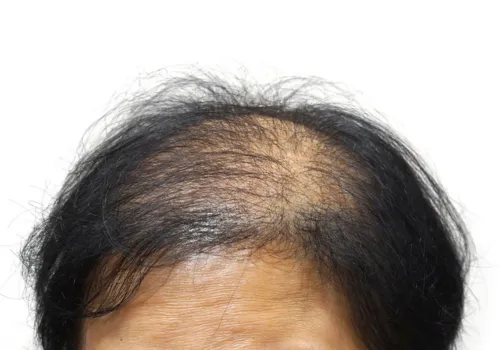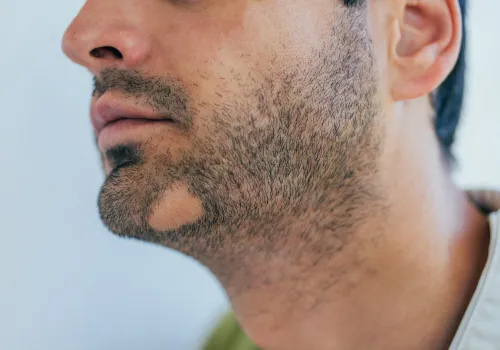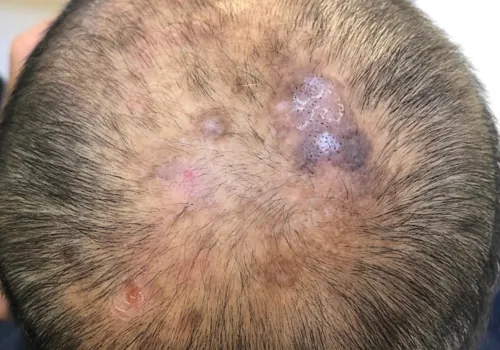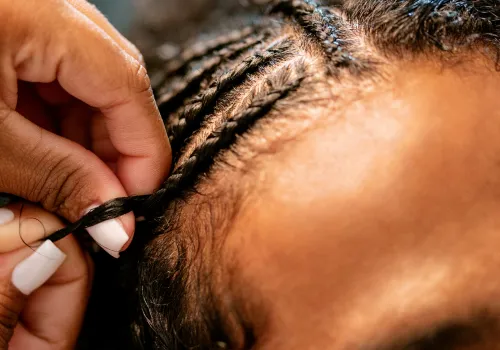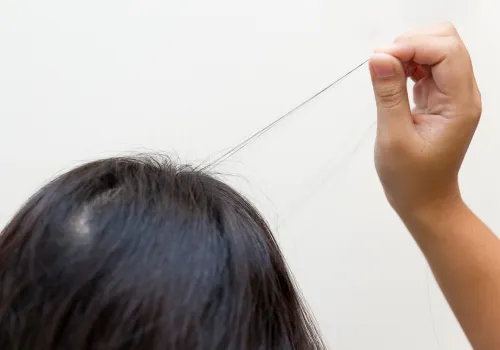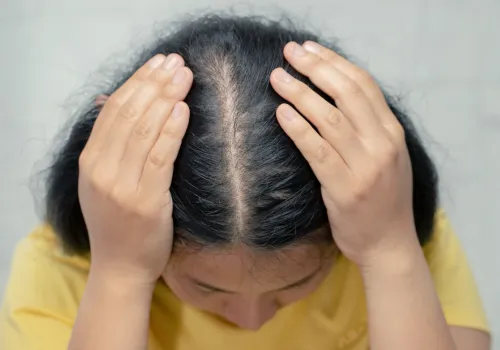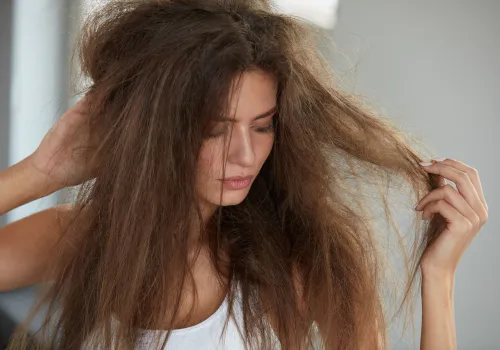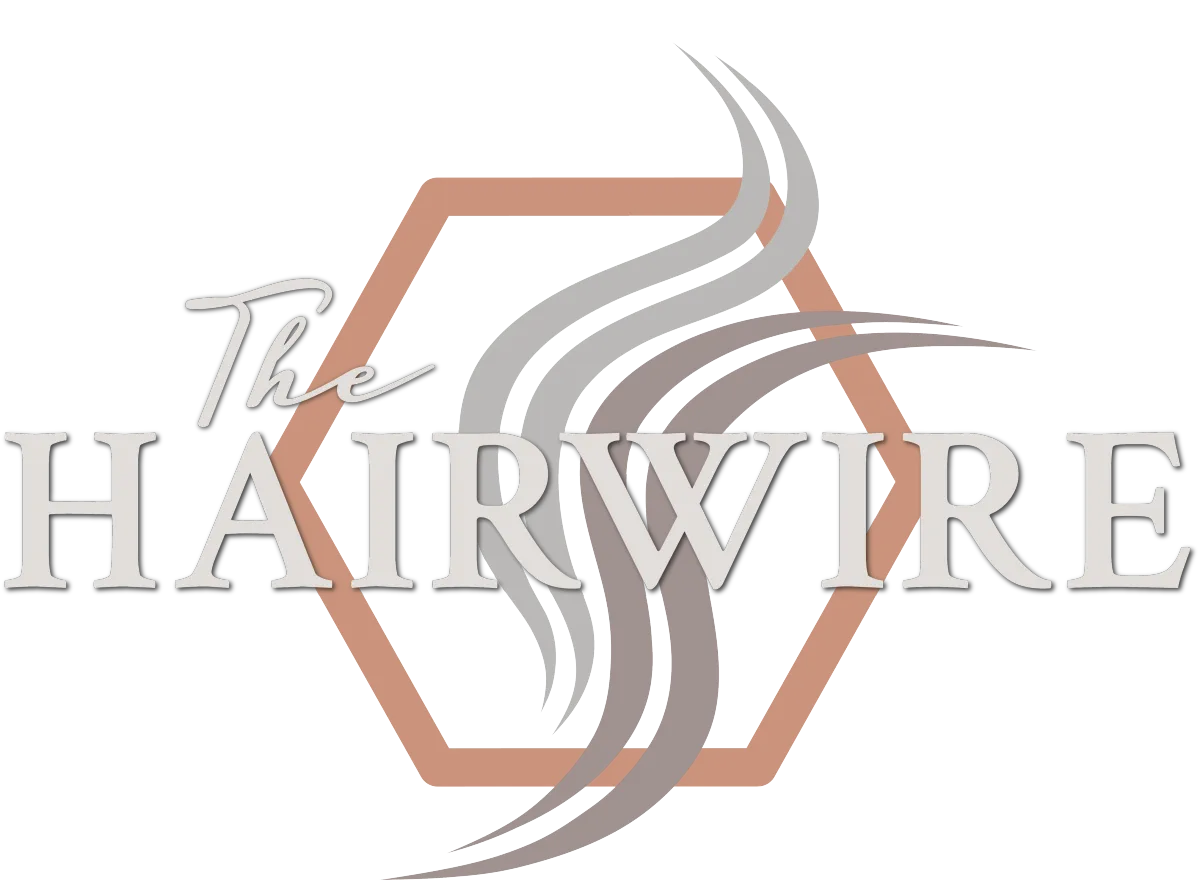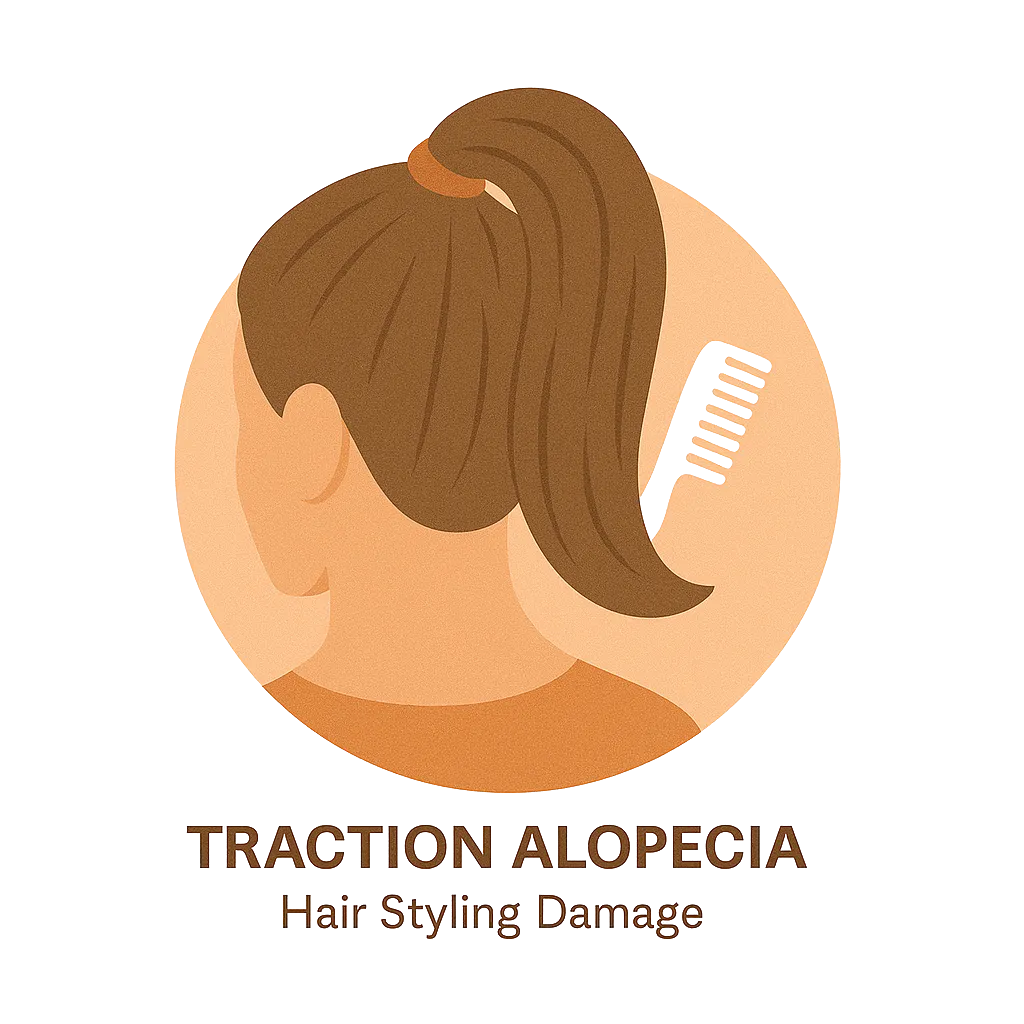
Traction Alopecia
(Hair Styling Damage)
Hair loss due to repeated tension on the scalp from styles like tight ponytails, braids, or extensions. It’s preventable and often reversible if caught early and styling habits are changed.
Scroll to Learn More
Hair loss caused by repeated tension or pulling on the hair, often from tight styles or improper hair care practices.
What is Traction Alopecia (TA)?
Traction Alopecia is a type of hair loss that results from prolonged or repeated tension on the hair shafts. It is most commonly caused by tight hairstyles such as braids, ponytails, buns, cornrows, weaves, or extensions. Over time, this tension damages the follicles and leads to hair thinning or bald patches, especially around the hairline and temples.
If caught early, traction alopecia can be reversed by changing styling habits and supporting scalp recovery. However, if the pulling continues long term, the damage can become permanent due to follicle fibrosis or scarring.
Common Causes & Contributing Factors
Tight hairstyles – Braids, weaves, locs, buns, and ponytails
Frequent tension – Repetitive pulling in the same direction over time
Hair extensions or glue – Adds extra weight and traction
Headwear pressure – Constant wearing of tight hats, helmets, or headscarves
Chemical relaxers or heat damage – Weakens the hair shaft and increases breakage
Improper detangling or brushing – Especially when wet or fragile
Don't worry, we can help!
What You Might Notice
Thinning or broken hairs around the temples or frontal hairline
Receding edges or "frayed" baby hairs that do not grow back
Redness, bumps, or tenderness along hairline or nape
Scalp irritation or soreness after styling
In advanced stages, shiny, smooth patches may indicate scarring
How It’s Diagnosed
A trichologist or scalp specialist will assess:
Pattern of hair loss (localized to areas under tension)
Scalp condition: inflammation, pustules, or follicular dropout
Health and styling history, including frequency of tight styles or chemical treatments
Magnified scalp analysis to evaluate follicle integrity and scar tissue
Functional tests if concurrent inflammation or hair loss patterns exist (e.g., TE or AGA overlap)
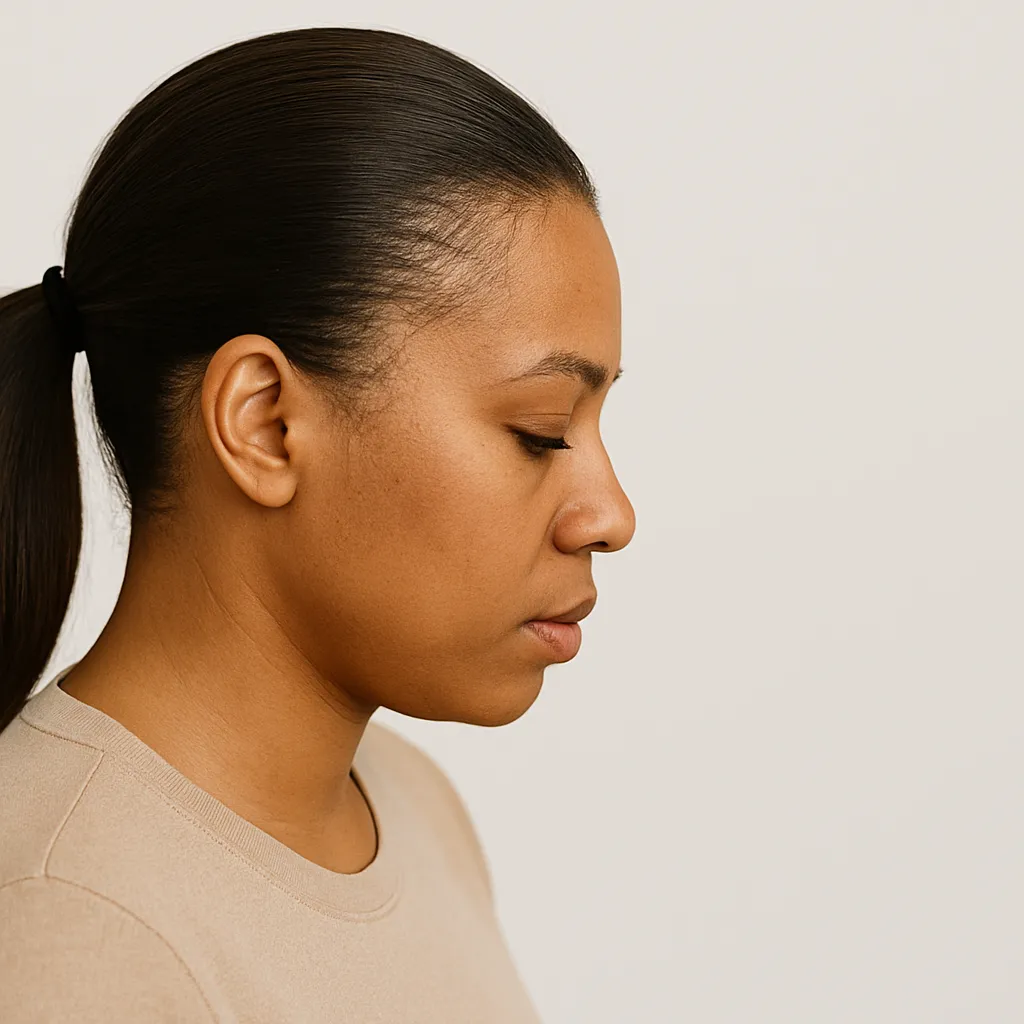
Treatment & Management Options
Lifestyle Recommendations
Avoid tight or repetitive hairstyles; let scalp rest
Choose low-tension styles and protective wraps
Sleep with silk or satin pillowcases to reduce friction
Topical / Clinical Treatments
Anti-inflammatory serums or sprays with aloe vera, calendula, or chamomile
Scalp massage with oils (e.g., jojoba, peppermint) to stimulate blood flow
Ozone or red light therapy to enhance follicle repair
Microneedling for follicle stimulation (only if no scarring is present)
Scalp Therapies & Supplements
Cell Food Drops and Iridium pH-balancing shampoo to restore scalp barrier
Functional supplements: collagen, zinc, vitamin C, MSM, and omega-3s
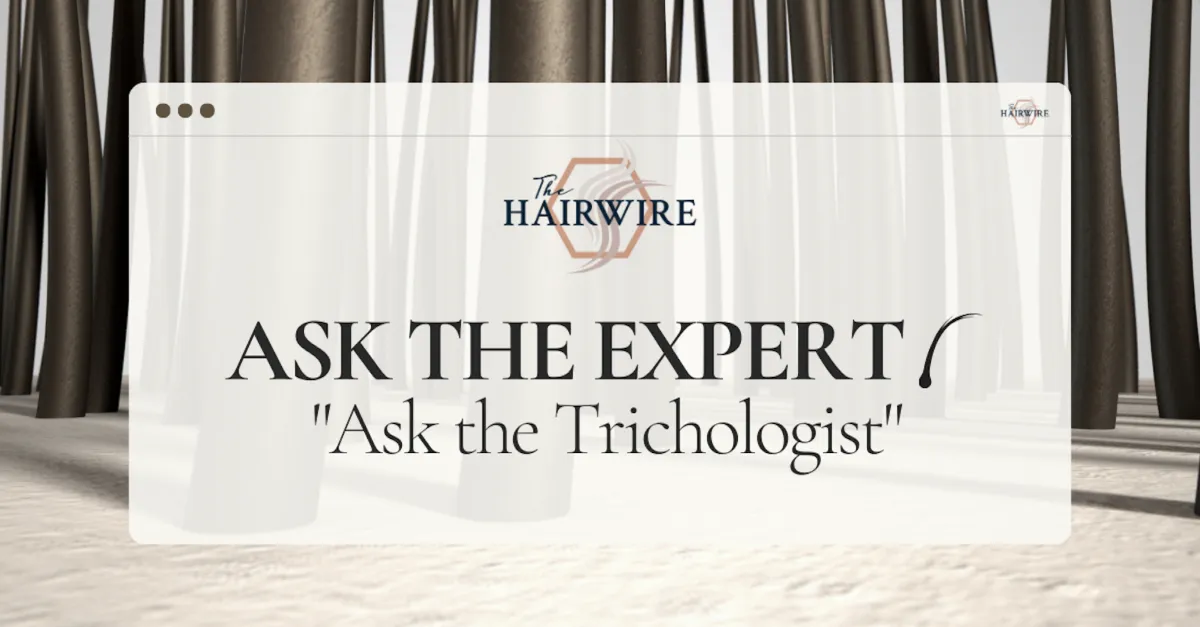
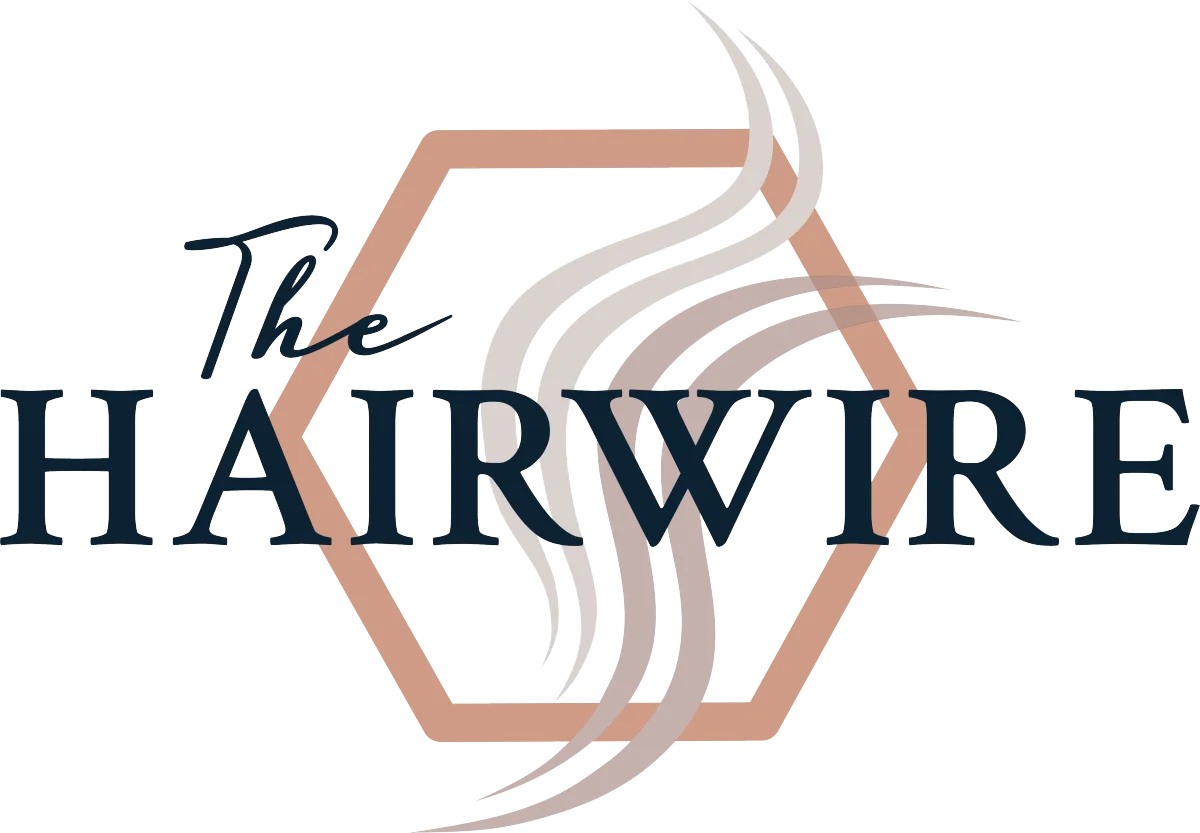
Not ready to book a session just yet?
That’s okay—your curiosity still matters! If you have a question about hair or scalp health but aren’t ready to move forward with a consultation, feel free to send it our way. We may feature it in an upcoming blog post or use it as a topic in a future live session—because chances are, someone else is wondering the same thing too.
Traction Alopecia (TA) Blog
We regularly share content on this topic through both video and written posts. Use the search bar to find answers to the specific questions you're looking for.

General Hair Loss Treatments
General Hair Loss Treatments ...more
Trichology ,kerrijarrett
May 22, 2025•1 min read
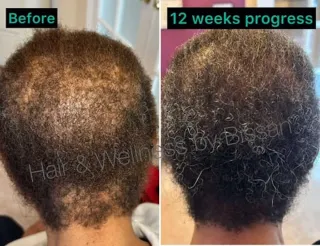
Case: Multiple Types of Alopecia
Hair loss can be overwhelming, especially when dealing with multiple types of alopecia. This case study shares how a woman in her 60s, after failed treatments, found hope through a whole-body approach... ...more
Androgenetic Alopecia ,Telogen Effluvium Alopecia Areata Scarring Alopecia Traction Alopecia Trichotillomania Hormonal Hair Loss Nutritional Deficiency Trichology &Bissan
November 28, 2024•4 min read
"Years of tight braids left my edges patchy and broken. I thought it was permanent until I got the right guidance. Changing my habits and using the right products helped my edges grow back."
– Client, Age 29
Real Stories. Real Experiences.
You’re Not Alone with Traction Alopecia
Dealing with Traction Alopecia can be frustrating and emotional — but you’re not alone. This space was created to offer support, share real experiences, and provide guidance. Together, we’re learning to care, prevent, and rebuild with confidence.
Understanding Traction Alopecia Starts Here
We’ve curated the most insightful, supportive, and educational videos on Traction Alopecia—so you don’t have to search alone.
Learn the causes. See the signs. Discover solutions. This playlist was designed to help you protect your hair, understand the condition, and feel empowered in your next steps.
Don’t forget to subscribe to our YouTube channel to stay updated as we share new videos, expert advice, and community stories every week.
CLICK BELOW TO WATCH FIRST!
Are You a Hair & Scalp Professional? Join the Faculty of Trichology
Whether you're already an expert, just getting started, or looking to deepen your specialty—we’ve got something for you.
The Faculty of Trichology is where professionals come to elevate their skills, build their credibility, and connect with a network that takes hair and scalp health seriously.
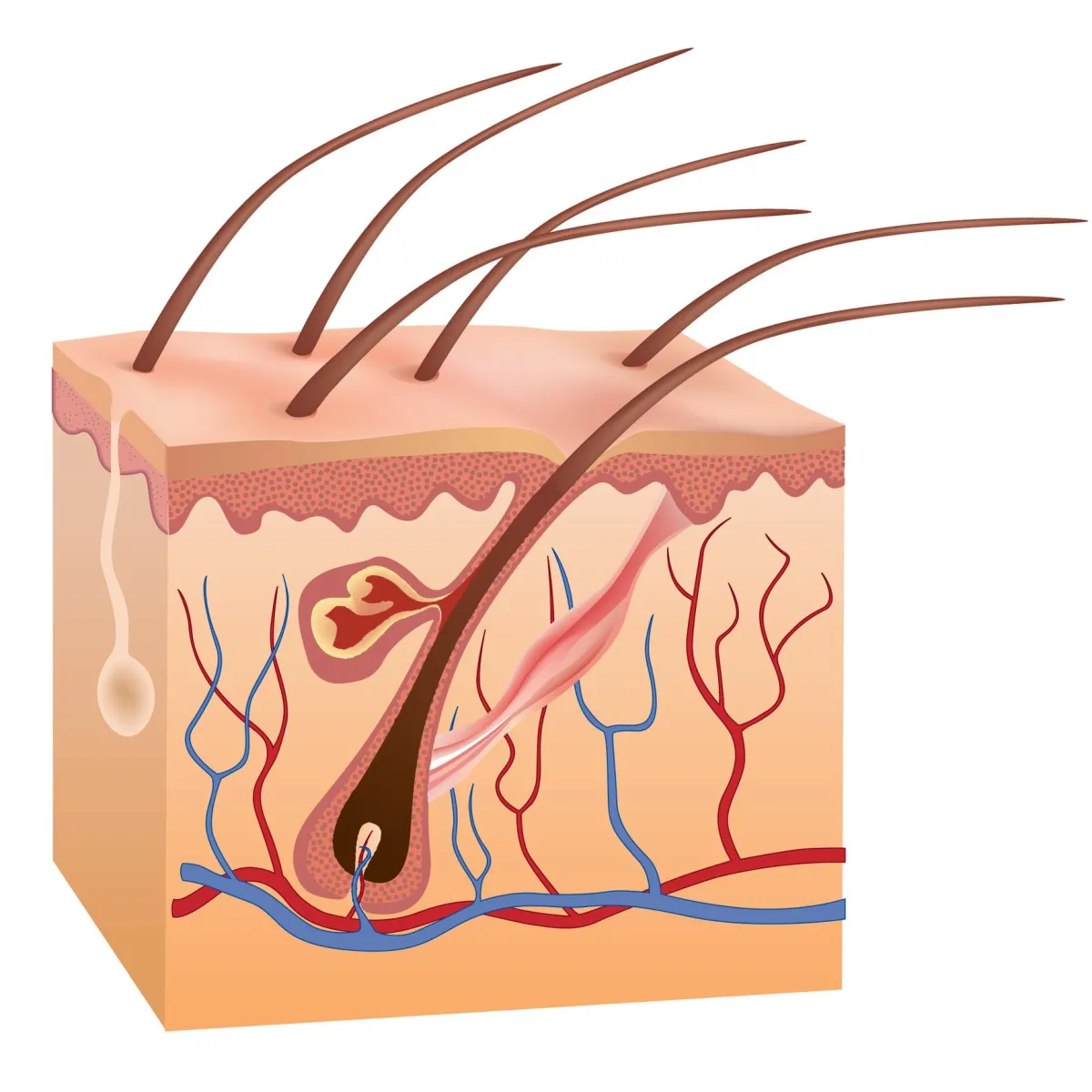
Alopecia Areata FAQ
What is traction alopecia and how do I know if I have it?
Traction Alopecia is a form of hair loss caused by repeated tension on the hair follicles, often due to tight hairstyles like braids, ponytails, buns, sew-ins, or extensions. Unlike genetic hair loss, this condition is completely preventable—and when caught early, often reversible. At The Hair Wire, we see this as a call for education, not blame. It's not just how hair is styled—it's how consistently and tightly it's done.
What are the first signs of Traction Alopecia?
Early signs include:
- Thinning or broken hair around the temples, crown, or nape
- Scalp redness or bumps where there’s been tensionA receding hairline or widening part
- A sensation of tenderness or itching after removing styles
These early red flags are often missed or dismissed until the damage becomes visible. That’s why awareness matters. We always say—listen to your scalp before it has to shout.
What causes Traction Alopecia besides tight hairstyles?
While styling is the main contributor,
other factors include:
- Repeated chemical processing
-Overuse of heat toolsHeadwear (helmets, headbands, wigs without protection)
- Sleep habits, like wearing tight wraps or bands overnight
- At The Hair Wire, we take a whole-routine approach—because traction doesn’t come from one moment; it’s cumulative tension over time.
Is Traction Alopecia permanent?
It can be reversible if addressed early—before the follicles are scarred or permanently damaged. Once scar tissue forms, regrowth becomes unlikely. That’s why we push for early intervention and routine scalp checks. Prevention isn’t about eliminating beautiful styles—it’s about making them healthier and more sustainable.
Who is most at risk for developing Traction Alopecia?
Traction Alopecia can affect anyone, but it's more common in:
- Individuals with textured or curly hair, due to styling norms
- Athletes or workers who wear helmets/hats often
- People with fine or fragile hair types
- Children, especially if hair is styled tightly from a young ageIt’s not just about culture—it’s about education and balance. We support protective styles when they truly protect.
How do I treat and reverse Traction Alopecia?
Start with a break from high-tension styles and prioritize:
- Scalp massages to stimulate circulationTopical treatments like peptides or essential oils (under guidance)
- Low-level light therapy or dermarolling (case-specific)
- Anti-inflammatory scalp care and gentle cleansing
- At The Hair Wire, we also integrate trichology-led scalp mapping to track progress and adjust based on your lifestyle and hair goals.
Can I still wear braids, extensions, or tight styles if I’ve had Traction Alopecia?
Yes—but with boundaries and breaks. Consider:
- Looser base tensionStyle rotation
- Scalp padding or silk barriers
- Regular rest periods between installations
- We believe in cultural and personal expression, but we also believe in education. Hair should never come at the cost of hair health.
What products or routines support recovery from Traction Alopecia?
Look for:
- Gentle cleansers that reduce inflammation
- Topicals with biotin, niacinamide, or caffeine
- Essential fatty acids and internal nutrition for follicle health
- Avoiding heavy oils or pore-blocking butters on tight folliclesAnd most importantly: patience. Recovery takes time—but with the right support, many regain fullness and confidence.
How can professionals help prevent Traction Alopecia in clients?
Stylists and trichologists play a vital role in prevention:
- Educate clients on tension-free styling
- Check scalp health regularly
- Offer protective alternatives and rotation plans
- Don’t just style—observe, inform, and empowerWe equip pros through The Hair Wire with the knowledge and confidence to speak up and support, not just style.
When should I see a professional for Traction Alopecia?
If you notice:
- Thinning at the hairlinePersistent scalp pain or redness
- No regrowth after 3–6 months of change
- Then it’s time to consult a trichologist or hair loss specialist. We recommend documenting changes, taking photos, and using a timeline approach—because hair tells a story, and early pages matter most.
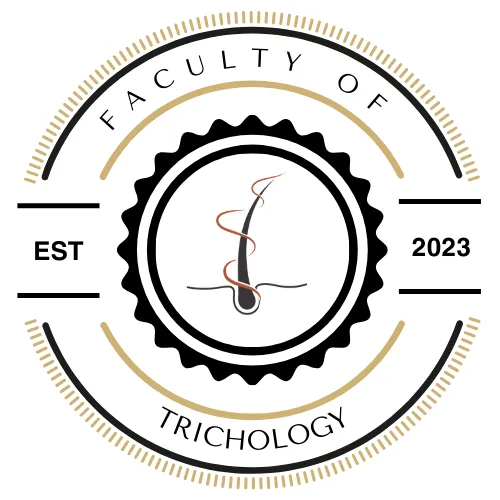
We’re more than hair. We’re a community, an education platform and a movement.
Our mission is to raise the standard — reigniting the heart of this industry with integrity, purpose, and connection. We’re also committed to bridging the gap between cosmetology, dermatology, and general practice, creating a more collaborative and informed approach to hair and scalp health.
ABOUT
The Hair Wire is a trusted resource created by trichologists, for anyone seeking clarity around hair and scalp health. With clinically backed information, we simplify complex hair loss conditions and offer professional insight, education, and solutions—one strand at a time.
DISCLAIMER
The content on The Hair Wire is intended for educational and informational purposes only. It is not a substitute for medical advice, diagnosis, or treatment. While our material is guided by professional experience and clinical trichology, we encourage individuals to consult with their own healthcare or wellness providers when making personal health decisions. The Hair Wire offers professional insights, not medical directives.
PATRON ACCESS
PRO' ACCESS
© Copyright 2025. The Hair Wire / Facutly of Trichology. All rights reserved.
